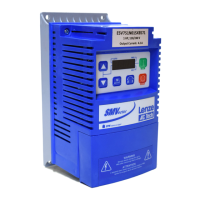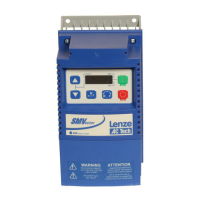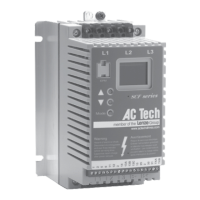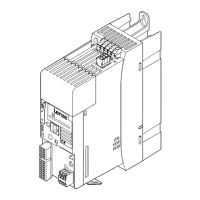What does EPM error mean on Lenze Inverter?
- JJamie GrantSep 6, 2025
If the Lenze Inverter displays 'EPM error', it means the EPM is either missing or defective. To fix this, power down the system and replace the EPM.

What does EPM error mean on Lenze Inverter?
If the Lenze Inverter displays 'EPM error', it means the EPM is either missing or defective. To fix this, power down the system and replace the EPM.
What causes overvoltage on DC bus in Lenze SMD DC Drives?
If you see 'Overvoltage on DC bus' on your Lenze DC Drive, it could be due to the mains voltage being too high, so you should check the mains voltage. It could also be caused by an excessively short deceleration time or the motor operating in generator mode. To resolve this, increase the deceleration time or use a dynamic braking option. Another cause could be earth leakage on the motor side, so check the motor/motor cable, separating the motor from the controller.
What causes motor overload in Lenze SMD DC Drives?
If your Lenze DC Drive reports 'Motor overload (I2t overload)', the motor may be thermally overloaded due to impermissible continuous current or frequent/long acceleration processes. Check the controller selection and the setting of c20.
How to fix EPM error on Lenze SMD DC Drives?
If your Lenze DC Drive shows 'EPM error', the EPM is either missing or defective. Power down the drive and replace the EPM.
What to do if Lenze SMD digital inputs not uniquely assigned?
If the digital inputs are not uniquely assigned on your Lenze DC Drive, it could be because E1...E3 are assigned with the same digital signals (each signal can only be used once) or because only “UP” or “DOWN” is used (assign the missing digital signal to a second terminal).
What to do if Lenze SMD DC Drives output frequency is 0 Hz?
If the Lenze DC Drive's output frequency is 0 Hz and the outputs U, V, W are inhibited, the setpoint might be 0 Hz. In this case, you should select a new setpoint. Alternatively, a quick stop might be activated through a digital input. To solve this, deactivate the quick stop.
How to troubleshoot Dynamic braking fault on Lenze Inverter?
If the Lenze Inverter is showing a Dynamic braking fault, it indicates that the dynamic braking resistors are overheating. To resolve this, increase the deceleration time.
What to do if Lenze SMD DC Drives lose 4-20 mA reference?
If your Lenze DC Drive loses the 4-20 mA reference, it means the 4-20 mA signal is below 2 mA (C34 = 4). Check the signal and signal wire.
What to do if Lenze SMD DC Drives controller overtemperature?
If your Lenze DC Drive controller is overtemperature, it means the controller is too hot inside. To fix this, reduce the controller load and improve cooling.
What causes single phase fault in Lenze DC Drives?
If your Lenze DC Drive is showing a single phase fault, it means a mains phase has been lost. Check the mains voltage.
| Product series | SMD |
|---|---|
| Category | DC Drives |
| Field current | Up to 2 A |
| Control mode | Speed, torque, position |
| Protection | Overcurrent, overvoltage, overtemperature |
Details items included with the inverter.
Critical information regarding product receipt and checks.
Overall safety guidelines for handling and operation.
Specifies intended use and compliance with directives.
Guidelines for safe mechanical and electrical installation.
Safety considerations during the operation of the inverter.
Explains symbols and signal words used in the manual.
Lists relevant standards and environmental operating conditions.
Details electrical specifications and output current ratings.
Covers physical mounting and dimensions of the inverter.
Details wiring, EMC requirements, and connection diagrams.
Explains how to set and adjust operating parameters.
Describes the EPM for storing and managing parameter settings.
Details the codes, names, and functions of various parameters.
Defines how data is mapped for CANopen communication.
Specifies the mapping of Receive PDO data.
Specifies the mapping of Transmit PDO data.
Guides through the initial setup for CAN communication between controllers.
Explains status codes and common basic operational faults.
Lists specific error codes, their causes, and remedies.
Addresses faults related to CAN communication timeouts and initialization.
Covers faults related to short circuits, overloads, and voltage issues.











